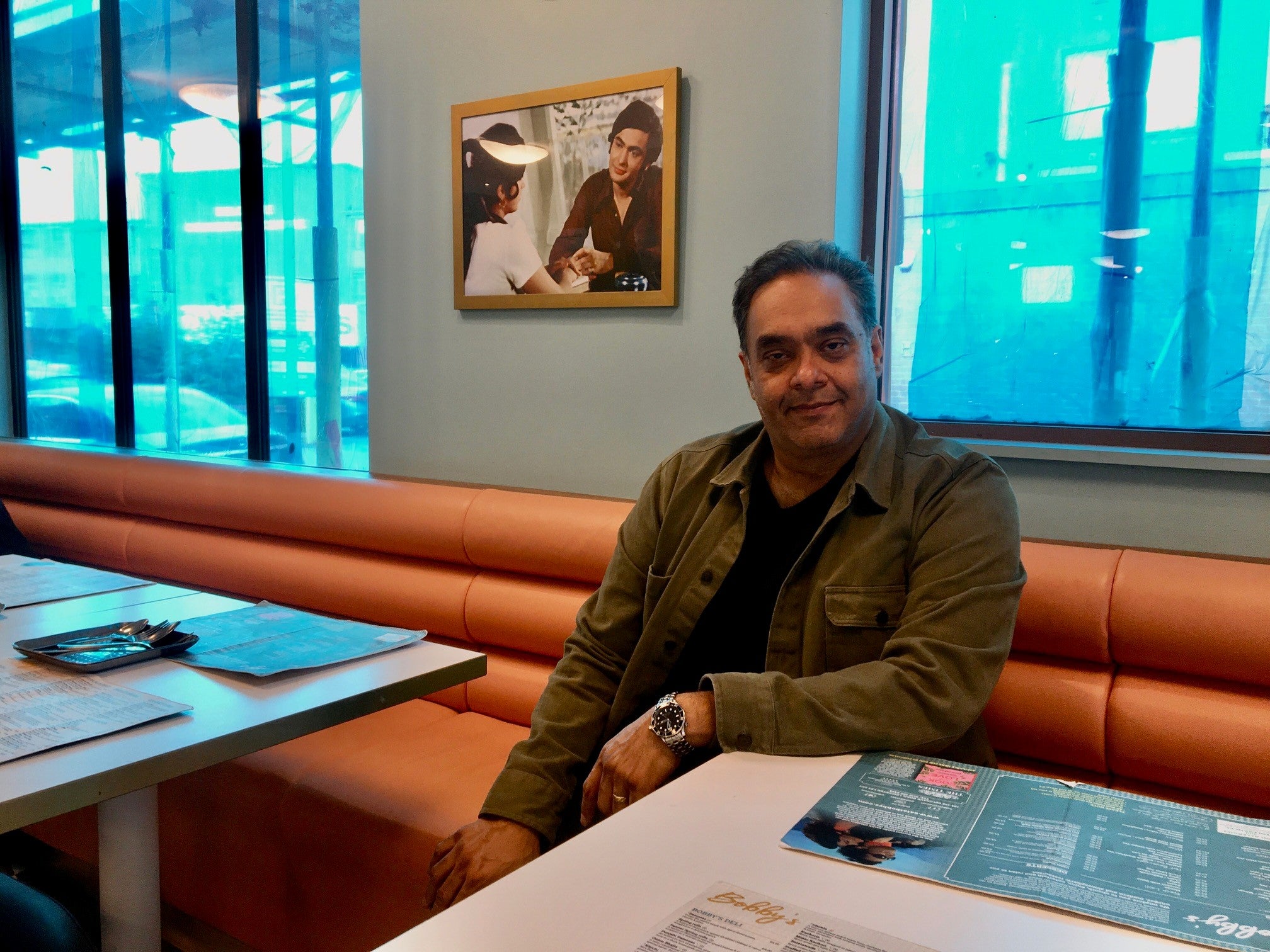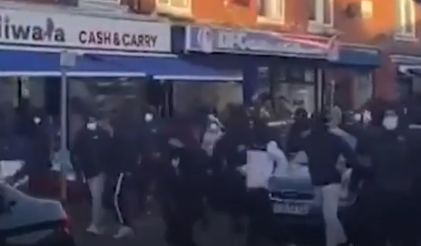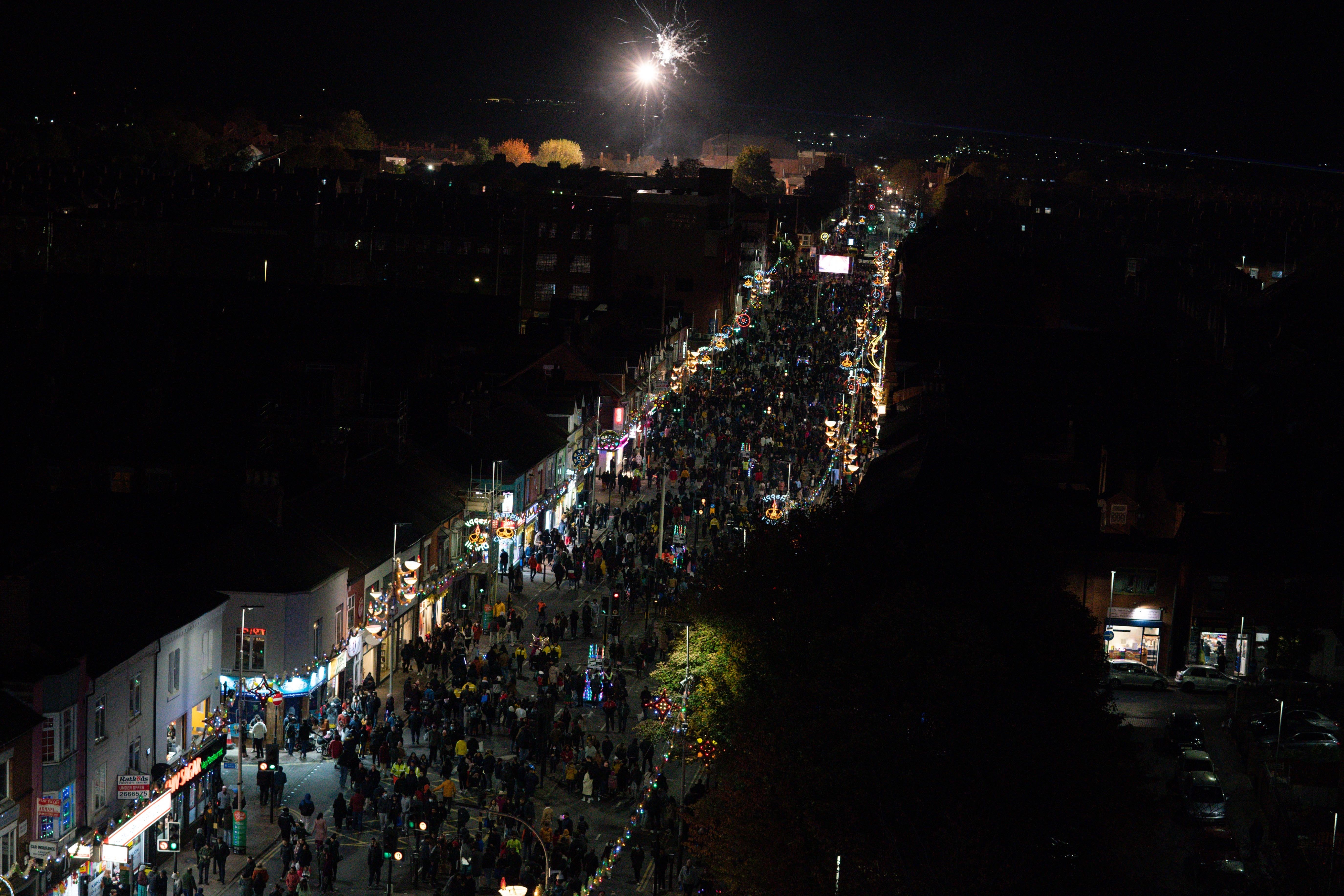
To the outside observer, the Golden Mile in Leicester appeared to teem with its usual, colourful life this week.
By day, the silk and saree shops, the jewellers and the money exchanges, did a demonstrable brisk trade. Chai was being served at pavement café seats. Music spilled from various doorways. By evening, the neon lights of the countless vegetarian restaurants and dessert parlous glittered as they always do.
But to those in the know, the hustle and bustle of this, the city’s Belgrave Road, was much mooted.
“People are scared,” said Dharmesh Lakhani, who runs Bobby’s deli here and is a committee member with the Belgrave Business Association. “My takings are down 30 per cent. Everyone’s staying indoors with their curtains closed. They don’t feel safe to come out.”
This was the aftermath of a weekend in which one of the UK’s worst race riots this century broke out here.
More than 500 young Hindu and Muslim men clashed with each other – and with police – during two nights of violence stretched across a swathe of Leicester’s east end. Cars were smashed, bottles and stones thrown and 20 arrests made. At least 25 police officers were injured. So bad was the violence that patrols had to be redirected from the Queen’s funeral – the biggest policing operation ever undertaken in the UK – to deal with it.
Now, Leicester finds itself blinking at a sudden reputational crossroads.
After a half century in which its peaceful diversity has become acknowledged as a model of integration across the world, city leaders fear one weekend of violence could have undone five decades of hard work. What on earth went wrong? And can calm be brought back to a city still simmering with tension?

When trouble first flared on Saturday night, Darmesh Lakhani himself was in the nearby Baps Swaminarayan Hindu temple. The congregation were told by police to stay inside for their safety but the 54-year-old father-of-two couldn’t help himself. He went out to look.
“This is my city, my area,” he said. “I had to see it with my own eyes. All these young buggers, running around and throwing things. I was numb. Embarrassed. I couldn’t believe what I was seeing. This in Leicester? I was lost.”
He wasn’t the only one.
Restaurant owners have described having to shut curtains and turn out lights as the mob rampaged. The owner of a local car wash rushed to his business, only to find hundreds of thugs had been kettled there by police. “Very bloody nice, it was,” he said on Wednesday. “Glass and horse shit everywhere.”
The shock here feels acute because Leicester is fiercely proud of its reputation for harmonious cohesion.
Immigration and tolerance are bedrocks of the city’s reputation. Its finest moment is often said to have come exactly 50 years ago when it opened its doors to 10,000 Asian Ugandans fleeing Idi Amin’s expulsion. In the half century since – a time period in which the Asian-heritage population has grown to almost 40 per cent – it has experienced no real racial or religious clashes.
Until this weekend.
Precisely how events on Saturday unfolded is unclear, distorted by claim, counter-claim, social media speculation and deliberate misdirection. Some say trouble was initiated by a large group of Hindu men marching towards the mainly Muslim Green Road Lane area. Others say that it was a peaceful demonstration, and that, in fact, a Muslim counter-protest led to the violence. Most appear to believe the truth is somewhere in the middle.
Either way, what we do know is that this was the culmination of weeks of smaller skirmishes following an India-Pakistan cricket match in Dubai in August. What we also know is that sport, ultimately, had nothing to do with anything.
Rather, many here suggest that inter-community tensions have grown increasingly strained over the last five years because of changing demographics and global politics.
One theory suggests that new Hindu arrivals living in the predominantly Muslim Highfields area have been regularly abused, leading to wider antagonisms. Another has it that those same arrivals have brought with them the religo-nationalist politics of their Indian homeland, where the current ruling party, the BJP, has overseen a raft of anti-Islamic policies and encouraged anti-Muslim violence.
“There is no doubt in my mind that the religious tensions in India and the actions of a hard-line, violent, nationalist government there has had a direct influence on what we have seen,” said Professor Neil Chakraborti, director of the Centre for Hate Studies at Leicester University. “Without the BJP in power in India – without their demonisation of minority groups – it is difficult to imagine the same tensions here.
“And what that shows – what we need to recognise, here in Leicester but everywhere where different communities co-exist – is that what goes on thousands of miles away, across continents and borders, will cause ripple effects at home. The global is local. In an interconnected world, events elsewhere will expose and exacerbate local tensions.”

Layered on top of this, he reckons, is a factor that is rather more unique to Leicester itself: complacency.
“As a city, I think, we have assumed we are immune from the kind of challenges we see elsewhere,” he said. “And that’s understandable because our tolerance has been part of our DNA for 50 years but we have got to be honest and open and smart enough to not hide from the fact those challenges do exist here.”
A failure of police and political intelligence also appears to have left the city’s institutions unaware of how febrile tensions had become. A lack of diversity within Leicestershire Police in particular has been blamed for the force appearing surprised – and entirely unprepared – for things boiling over.
“At one point you had eight officers trying to hold back 300 lads,” said one business owner who asked not to be named. “They looked shit scared, all eight of them. And so would I have been.”
The question, perhaps, is where Leicester goes from here.
Community leaders, inter-faith organisations and the city’s elected mayor Sir Peter Soulsby have all been at pains to say that solutions lie in communications not violence. An independet enquiry has been promised. They have also emphasised the fact that, of 20 people arrested this weekend, more than half were not even from Leicester. Five came from Birmingham alone.
“It does suggest that there are people with other battles to fight who are coming to Leicester to fight them,” said Sir Peter on Wednesday.
Yet the mayor’s claim that the trouble “does not represent anything that is simmering in Leicester” has been called naïve by those on the ground.

“There are tensions and grievances here,” said Yasmin Surti, secretary of the Federation of Muslim Organisations and a volunteer in the east end for more than 30 years. “And we must recognise them because if we don’t recognise them, how can we address them?”
The 55-year-old mother-of-three says only twice in four decades living in Leicester has she ever felt anxious.
The first was in 201 when a much-publicised EDL march took place in the city. The second was on Wednesday when she sat talking to The Independent in Belgrave Road – a mainly Hindu area – while wearing her hijab.
“That’s an internalised thing,” she insisted. “No-one has said anything or even looked at me any differently. I know the people here are good people. I work here, have friends here. But I got out my car and, yes, what’s happened does make you think: will I be okay?”
Like everyone here, she is convinced that two nights of trouble are not enough to destroy Leicester’s hard-earned reputation.
But, also like everyone else here, she knows reputations can quickly be destroyed. She warned that more clashes will begin to irreparably cast the city as unsafe, unfriendly and unwelcoming. The damage, she made clear, would be social and economic. “There are no winnders - everyone here loses,” she said. “It drags us all down.”
How not to let that happen is now the main focus of many here. And a growing consensus already appears to be that community engagement must be improved and made fit for the 1st century.
Chakraborti again: “What Leicester has always done well is engage with its different communities. But our engagement today – it is very outdated.
“As a city, we rely on dialogue with a very narrow band of community leaders and opinion-formers who might do a really sincere job but they don’t always accurately represent the diverse range of voices that have grown in the city. We need to think of new and more sophisticated ways of hearing all our voices and reaching out to those who are feeling disenfranchised.”
He stresses a point. “This is not just a Leicester problem,” he said. “I think this is something all towns and cities must learn to do better.”
Across the city at De Montfort University, his counterpart, Kim Sadique, an associate professor in community and criminal justice, agrees.
“There’s this phrase for engagement we have here: samosa and tea,” she said. “You invite people to have samosa and tea, and you talk to them about what can be done to improve their area. But the problem is that the people you are engaging with there are people who want to be engaged. We need to find mechanisms of getting out and speaking to people who don’t come forward. That’s how you create a better future.”

For now, in Bobby’s deli on the Golden Mile, however, it is the present that is raising some concerns.
It is Diwali next month, and this road claims to host the biggest light festival outside of India.
Yet – even with the street decorations already up – there are worries that people might stay away. They are worries not helped by the fact India play Pakistan in the T20 cricket world cup the day before.
“It’s a wonderful night, every year, wonderful,” said Lakhani. “Not just for Hindus. All people come. Hindus, Muslim, Sikhs, Christian. Everyone. And it must go well this year. It must. We need to show the world that this is what Leicester is all about; that we celebrate with each other; that we are one community.”







